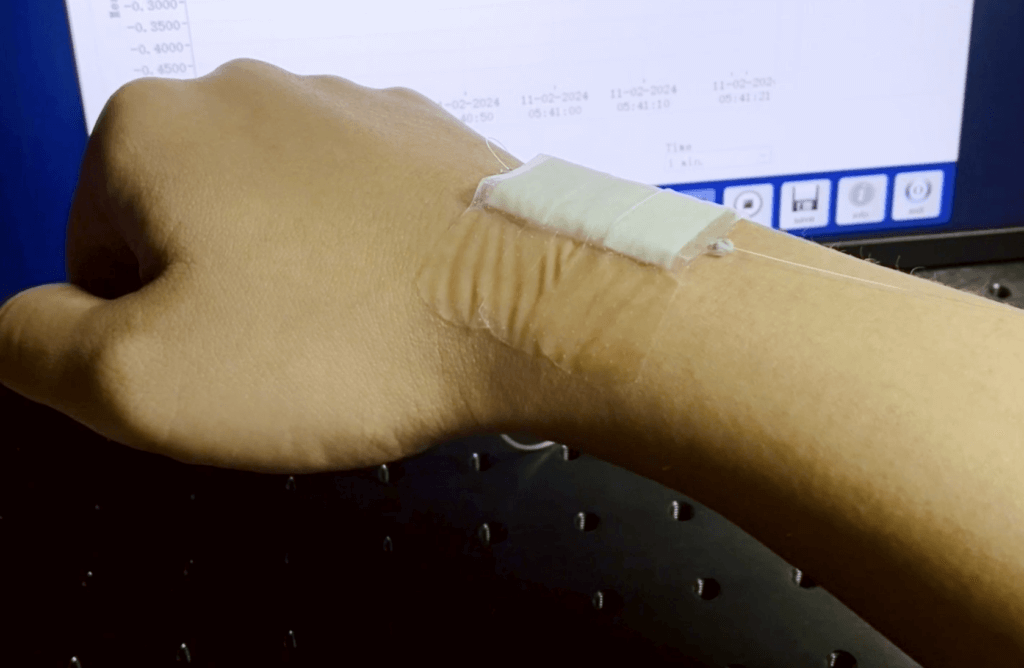Scientists have created a wearable sensor that feels like a “second skin” and can translate movements of the hand or fingers into communication. The breakthrough could potentially revolutionize the way individuals with disabilities and those undergoing rehabilitation can interact with the world around them.
This innovative technology made by engineers at three universities in China harnesses the flexibility of a material called polydimethylsiloxane (PDMS). The material is then combined with the precision of an optical component known as a fiber Bragg grating (FBG), offering both comfort and accuracy in detecting movement.
“For someone recovering from a stroke, these sensors could monitor wrist, finger, or even facial movements to monitor their rehabilitation progression,” says co-creator Kun Xiao, from Beijing Normal University (BNU), in a statement. “For individuals with severe mobility or speech impairments, the sensors could translate gestures or facial expressions into words or commands, enabling them to communicate with others or interact with technology more easily
Published in the Biomedical Optics Express journal, this research is a collaborative effort among experts in optical, biomedical, software, and electrical engineering. In addition to BNU, researchers hail from Sun Yat-sen University and Guilin University of Electronic Technology.

The inspiration behind this invention stems from the challenges faced by individuals with disabilities and those recovering from strokes or similar conditions, who often struggle with basic movements and communication. Zhuo Wang from BNU emphasizes the need for a solution that balances precision and comfort.
“Our goal was to develop a wearable solution that was both precise in detecting gestures and comfortable for everyday use, offering a more personalized and adaptive approach to rehabilitation and assistance,” Wang says.
To achieve this, the researchers engineered patches made from PDMS, a silicone elastomer known for its flexibility and skin-friendliness, ensuring long-term wear without discomfort. The integration of FBGs into these patches allows the sensor to detect slight movements by analyzing changes in light propagation, offering a unique method for movement detection.
“The real magic comes from the combination of the PDMS with FBGs,” adds Chuanxin Teng from Guilin University of Electronic Technology. “We found that using a thicker PDMS patch caused a more pronounced wavelength shift.”
Overall, the sensor stands out for its high sensitivity and accuracy in gesture recognition and communication assistance during testing phases.
“Beyond detecting movement, these adaptable sensors could be tailored for applications such as monitoring other health indicators like respiratory or heart rate by detecting subtle body movements,” says Rui Min, also from BNU. This versatility suggests that the technology could benefit athletes, fitness enthusiasts, and even gaming enthusiasts by providing real-time feedback to improve form or enhance interactive experiences.
The potential of this technology extends beyond gesture recognition; it also shows promise in transforming simple gestures into commands or messages, offering a new communication avenue for those with speech or mobility impairments. The researchers are now focused on refining the technology for practical use, including miniaturization, wireless communication enhancements, and improvements in durability to ensure the sensors can withstand daily wear and tear.
Additional clinical studies are still needed before the sensor will be available for doctors and clinics to use.










-392x250.jpg)

